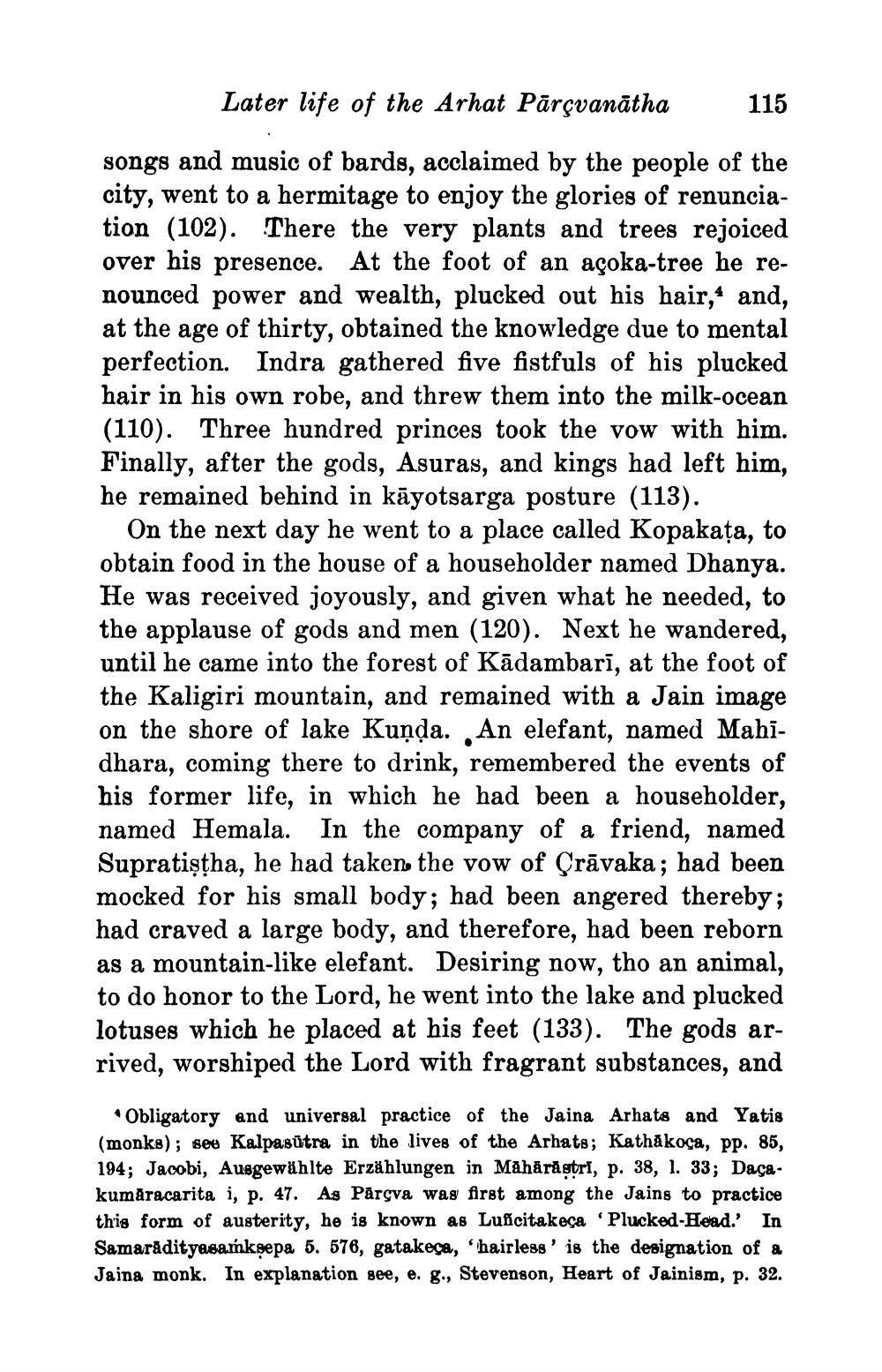________________
Later life of the Arhat Pārçvanātha
115
songs and music of bards, acclaimed by the people of the city, went to a hermitage to enjoy the glories of renunciation (102). There the very plants and trees rejoiced over his presence. At the foot of an avoka-tree he renounced power and wealth, plucked out his hair, and, at the age of thirty, obtained the knowledge due to mental perfection. Indra gathered five fistfuls of his plucked hair in his own robe, and threw them into the milk-ocean (110). Three hundred princes took the vow with him. Finally, after the gods, Asuras, and kings had left him, he remained behind in kāyotsarga posture (113).
On the next day he went to a place called Kopakața, to obtain food in the house of a householder named Dhanya. He was received joyously, and given what he needed, to the applause of gods and men (120). Next he wandered, until he came into the forest of Kādambarī, at the foot of the Kaligiri mountain, and remained with a Jain image on the shore of lake Kunda. . An elefant, named Mahidhara, coming there to drink, remembered the events of his former life, in which he had been a householder, named Hemala. In the company of a friend, named Supratiştha, he had taken the vow of Crāvaka; had been mocked for his small body; had been angered thereby; had craved a large body, and therefore, had been reborn as a mountain-like elefant. Desiring now, tho an animal, to do honor to the Lord, he went into the lake and plucked lotuses which he placed at his feet (133). The gods arrived, worshiped the Lord with fragrant substances, and
Obligatory and universal practice of the Jaina Arhats and Yatis (monks); seu Kalpasūtra in the lives of the Arhats; Kathakoça, pp. 85, 194; Jacobi, Ausgewählte Erzählungen in Mahără stri, p. 38, I. 33; Dacakumăracarita i, p. 47. As Pårçva was first among the Jains to practice this form of austerity, he is known as Luícitakeca Plucked-Head.' In Samarādityasanksepa 5. 576, gatakeca, 'hairless' is the designation of a Jaina monk. In explanation see, e. g., Stevenson, Heart of Jainism, p. 32.




